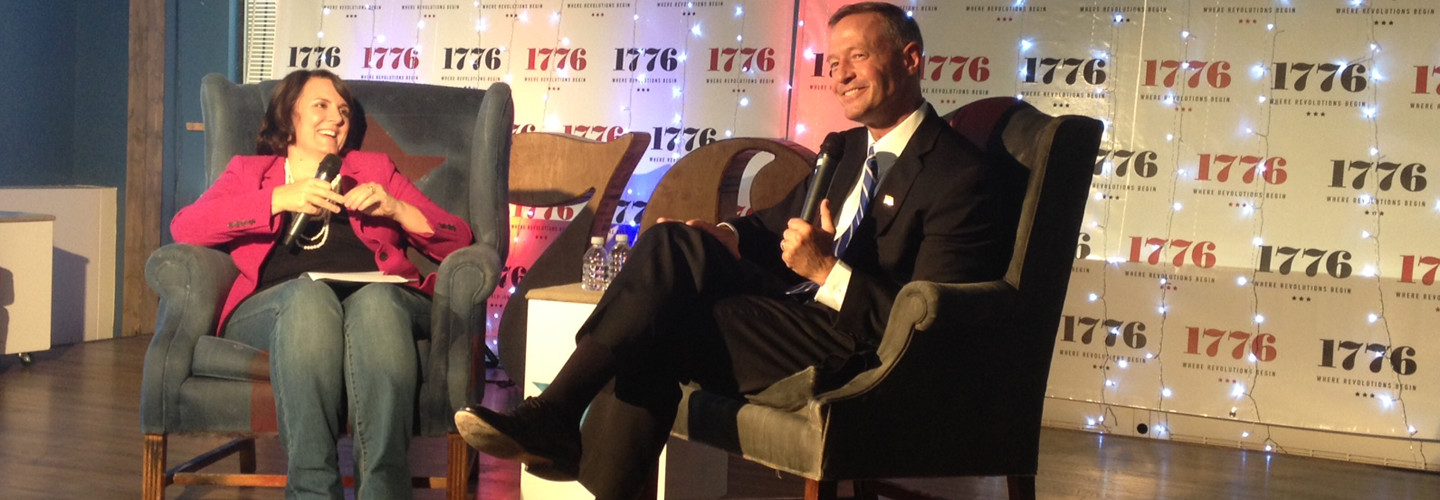Gov. Martin O’Malley Advises Innovators on Doing Business with the Government
Innovators and startups pride themselves on being creators of disruptive technologies. We expect them to introduce game-changing solutions that improve our quality of life and enable administrations to govern better.
But the journey from innovative solution to government adoption is far from easy and can seem impossible for smaller companies with cutting-edge technologies. There are risks that come with being the first in government to try new things, and anyone who’s in charge of an office or an agency knows that people can get fired for doing something first, especially if it doesn’t work, Maryland Gov. Martin O'Malley told entrepreneurs during an intimate chat this week hosted by 1776, a Washington, D.C., startup incubator.
“You tell somebody that’s overwhelmed in our local motor vehicle administration that you’ve got a wonderfully disruptive technology, and they will think you’re nuts,” O'Malley said. They don’t want disruption. They want stability and predictability.
“So, what we have to find is somehow that beta case that takes some of that downside risk out of it for government,” he explained. Agencies want to know if anyone else in government has successfully used a new product or service, or if another large organization like a hospital has proven that a solution works.
For companies without existing or previous government contracts, there’s another route that could help open the door to business opportunities.
Maryland’s Innovation Ombudsman
O’Malley encouraged entrepreneurs to connect with the state’s chief innovation officer, Michael Powell, who left IMB Corp. and started his new role in August 2012.
Powell was brought on to help agencies consider alternatives to traditional procurements, he told Government Technology earlier this year. “There is an RFP for a new personnel system,” Powell said. “In the old days, that would be for a traditional [ERP] system only. But now, at a minimum, cloud-based solutions will be part of the mix.”
In many ways, he is the mediator between innovators on the outside and their potential customers in government. He has to translate how these new ideas benefit the mission, and that’s also the case for a growing number of government chief innovation officers.
“Our hope is that he acts as an ombudsman for new ideas and for what you would call disruptive technologies and what [we] must package and sell to department heads as innovation solutions to make their departments more effective,” O’Malley said.
Accelerating Innovation
The state has some 30 incubators to foster new talent and introduce them to potential investors. O’Malley noted that 37 percent of the state’s job growth last year came from firms with 49 people or fewer.
In taking stalk of its innovation ecosystem, Maryland identified areas in which the state excels. O’Malley touted centers of research and development at the National Institutes of Health, Aberdeen Proving Ground and Fort Detrick. Venture capital, however, is a weakness in that ecosystem.
“If you look across this Chesapeake crescent and treated it like one state and compared ourself, to say, Boston where there is more venture capital or to California where there is more venture capital, it’s clear that that’s a weakness in our ecosystem,” O’Malley said. He highlighted the Maryland Venture Fund, the state’s cybersecurity investment tax credit and increased STEM degrees as solutions for its weaknesses.
Part of the state’s push to embrace innovation includes a data-driven approach to governing. Maryland’s StateStat initiative tracks the progress in meeting key strategic goals, including employment for veterans and reducing violent crime and preventable hospitalization.
“We shouldn’t just be content that our cities have figured out how to govern themselves,” O’Malley noted. “It can be done at county levels and at state levels and at federal levels if only we discard that old way of thinking that government decisions need to be held close, and risk of embarrassment is greater than the benefit of everyone knowing what everyone knows.”








